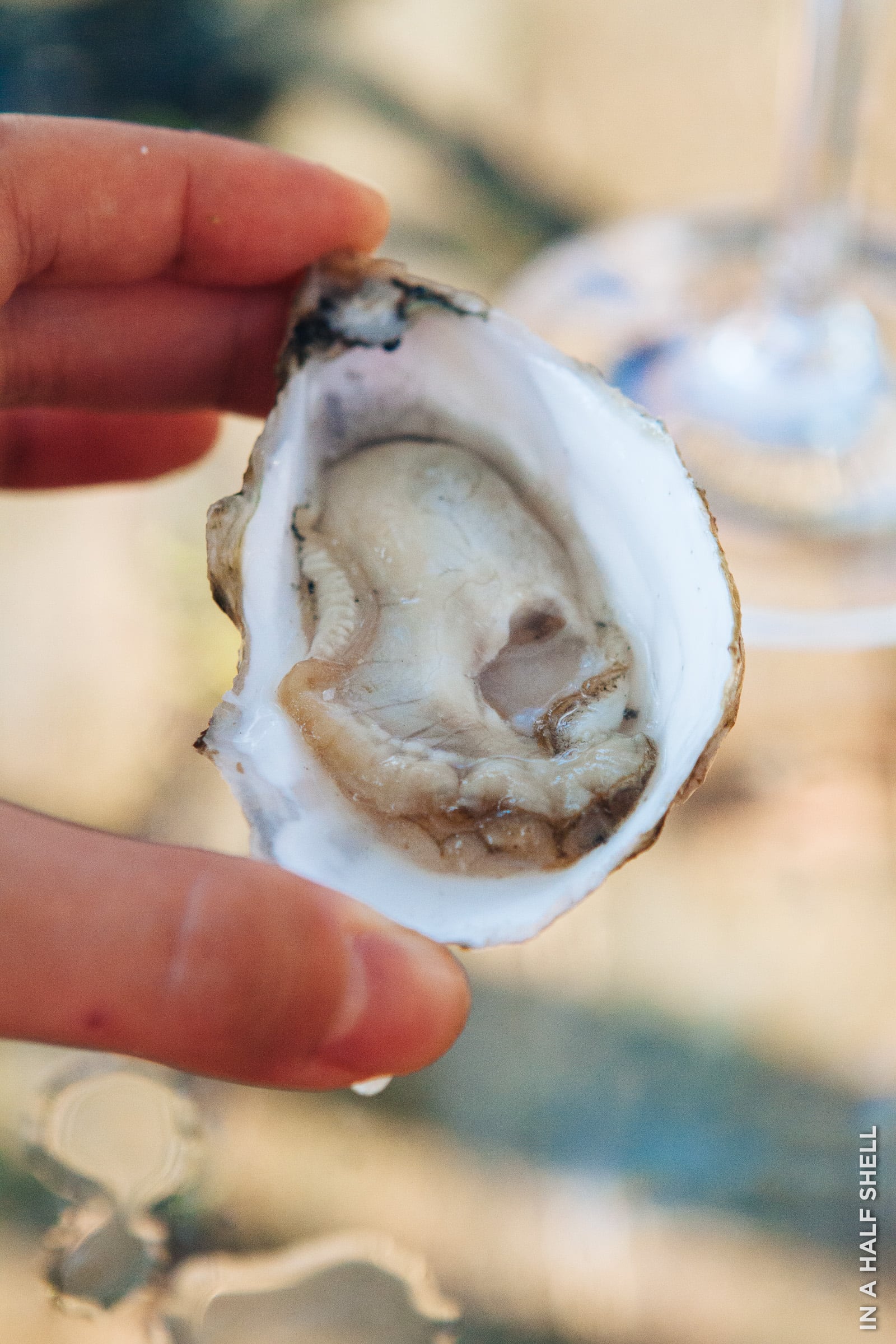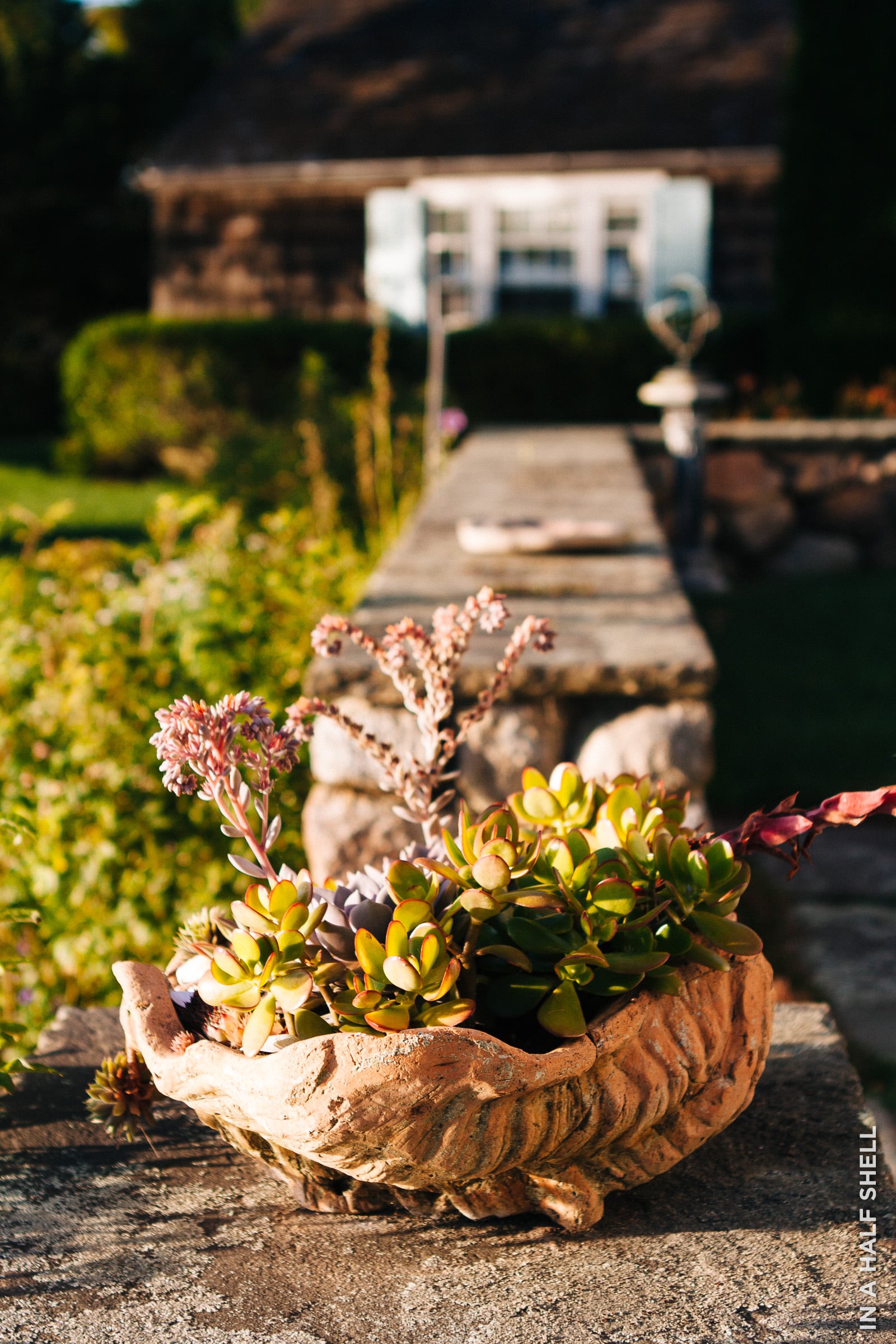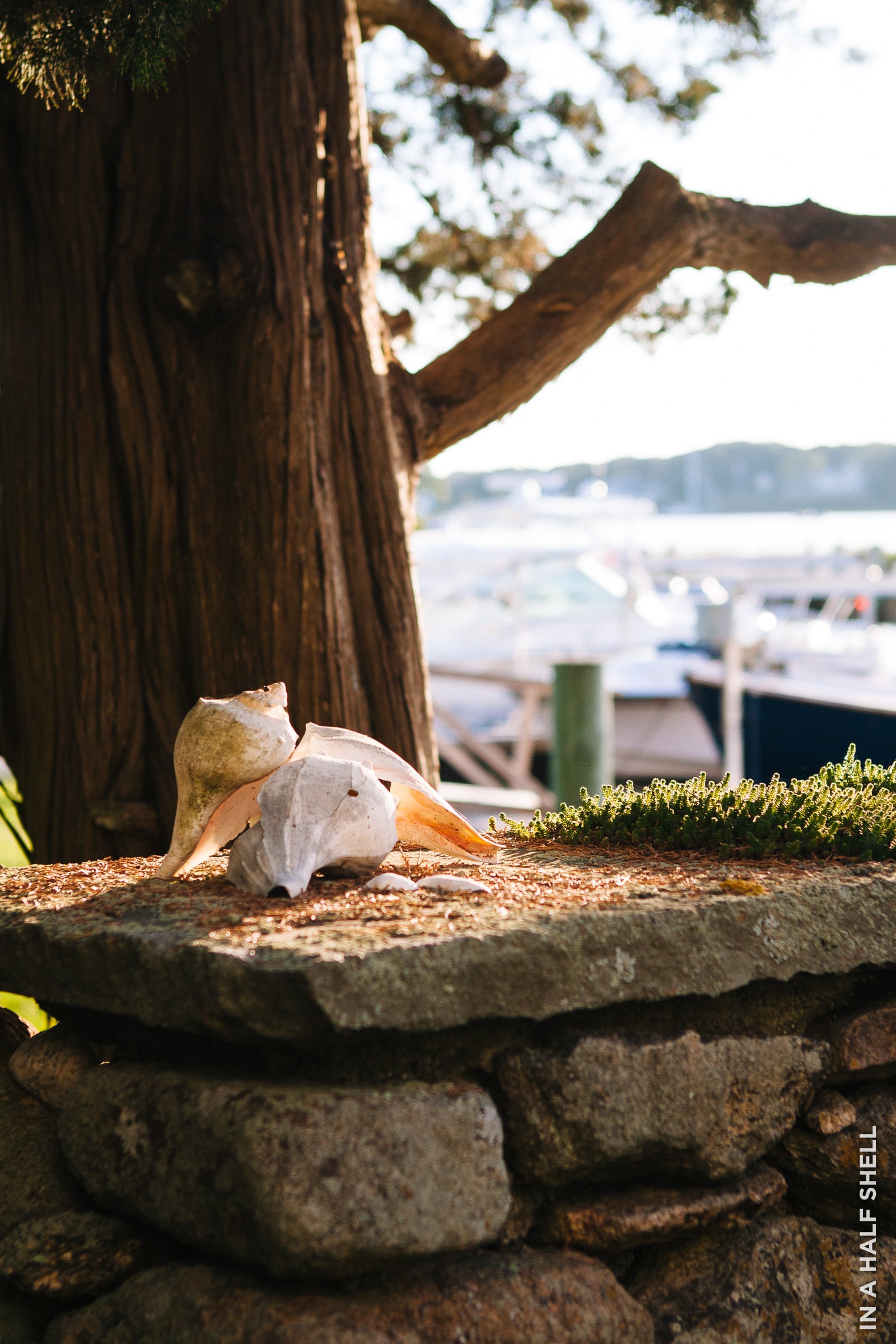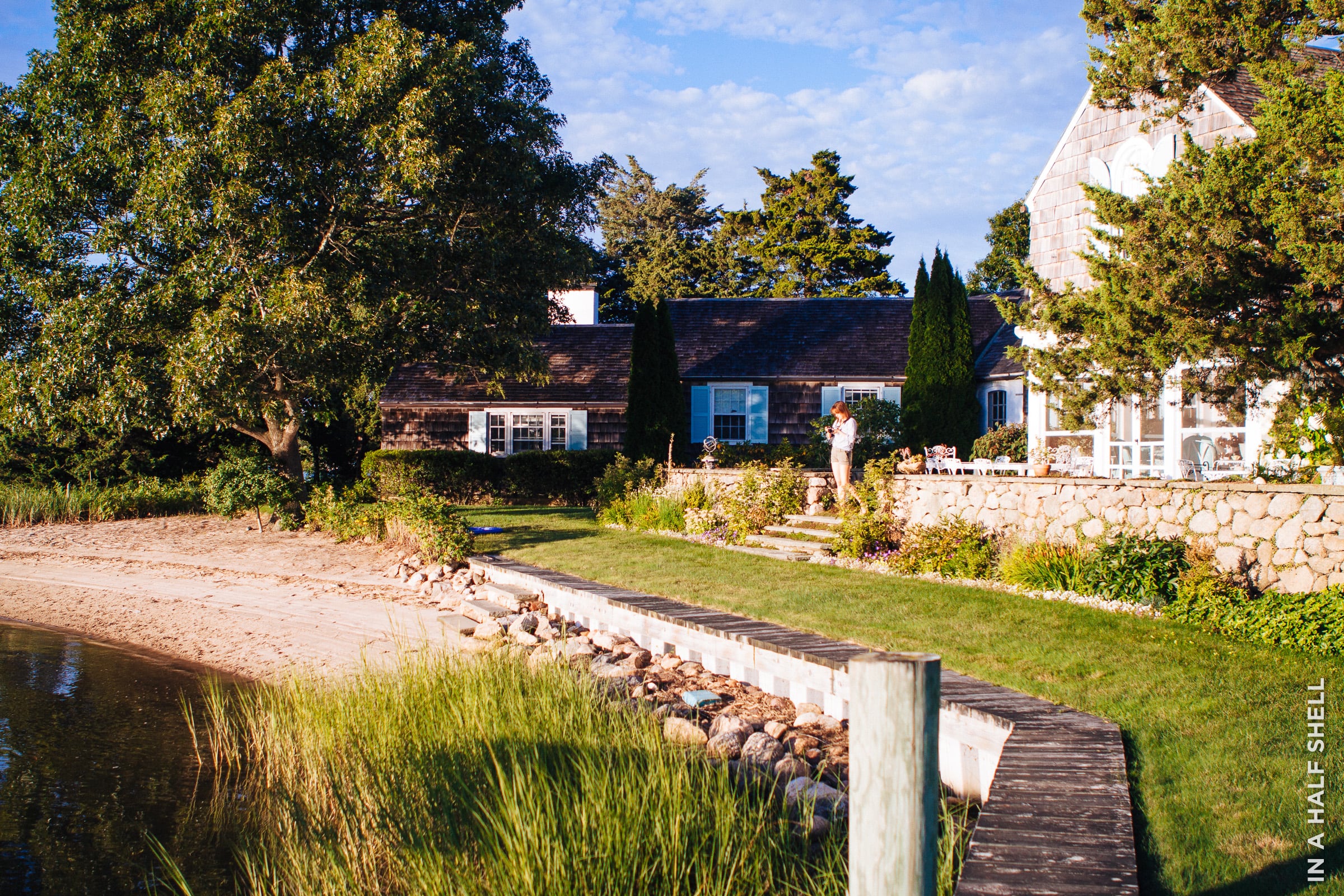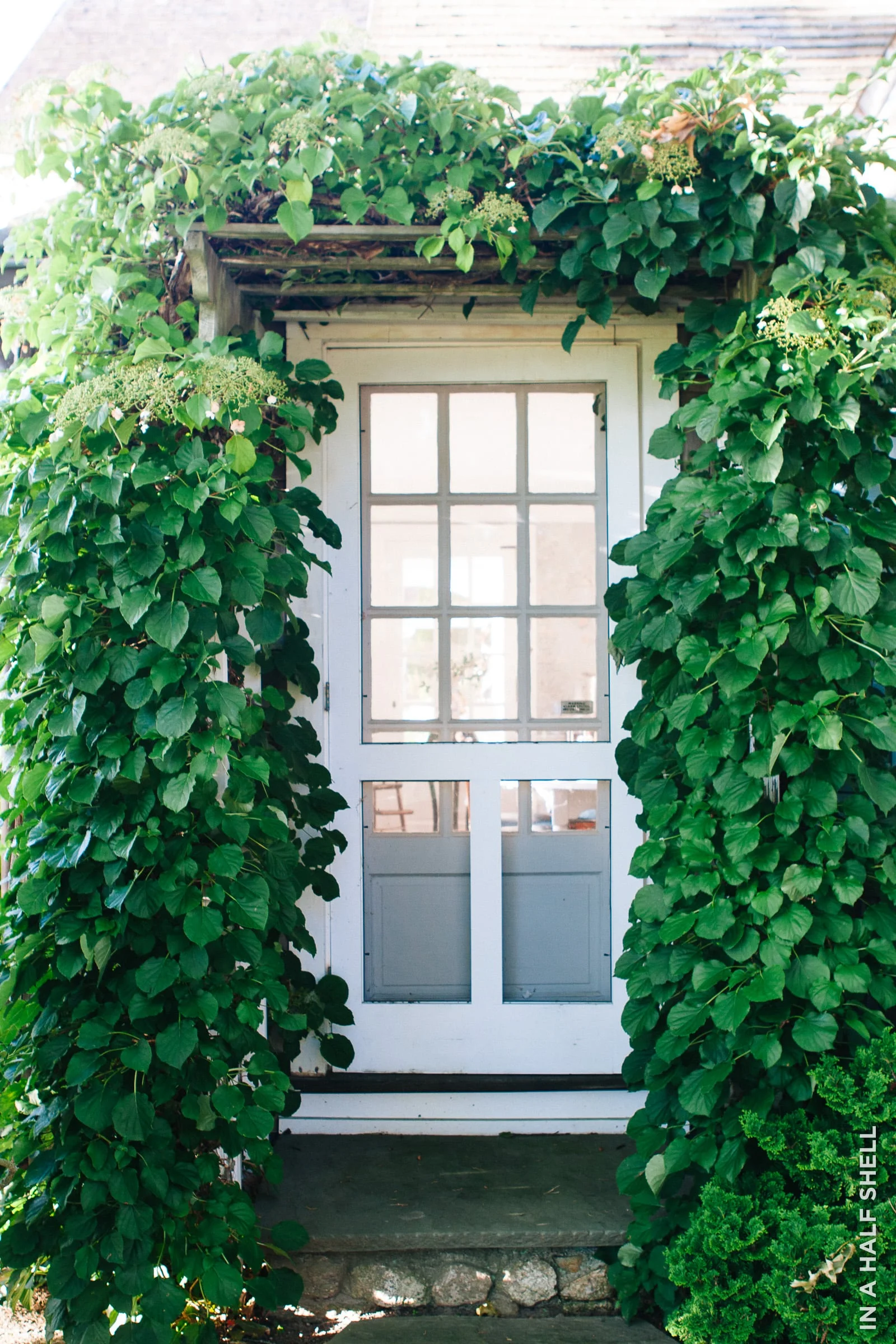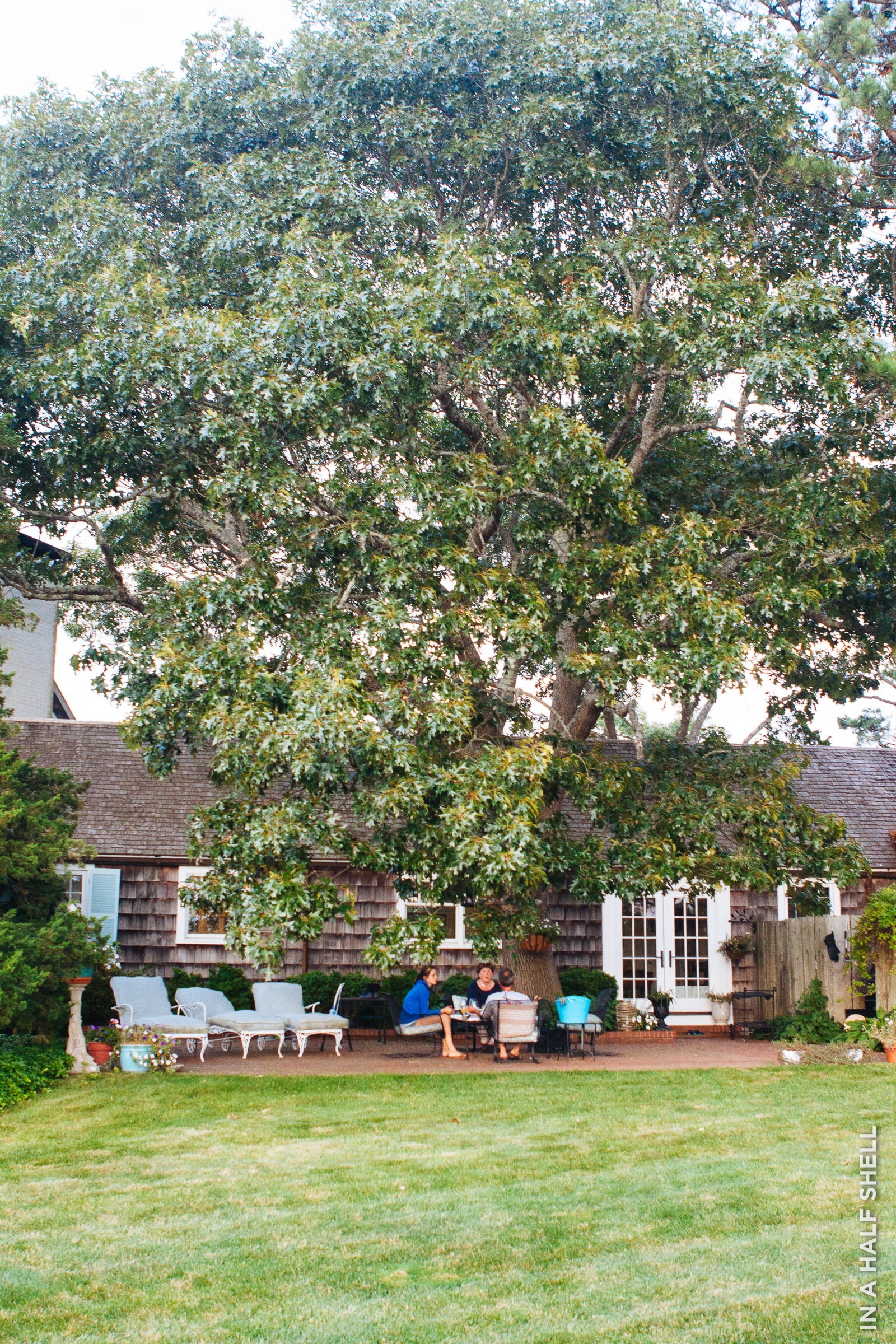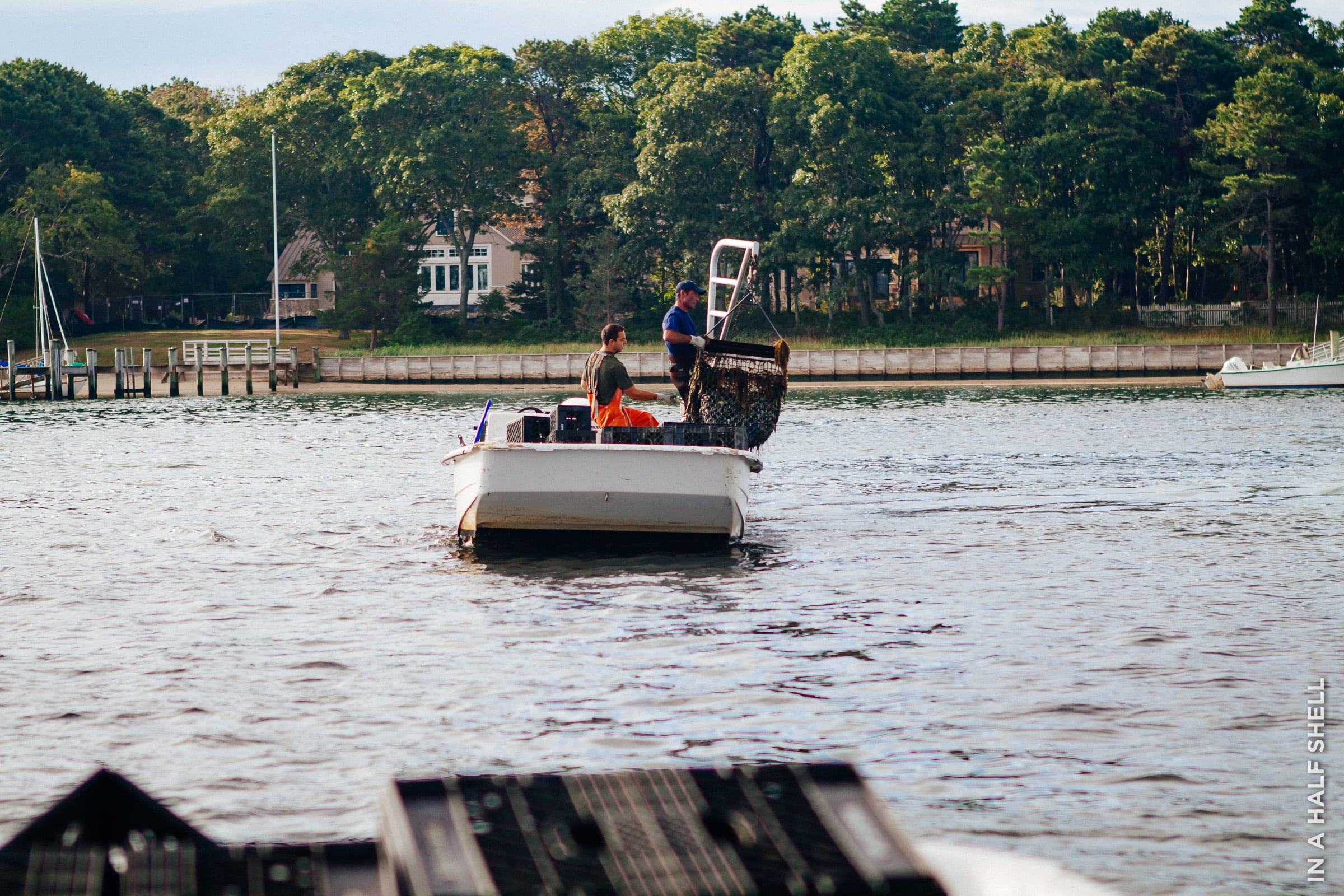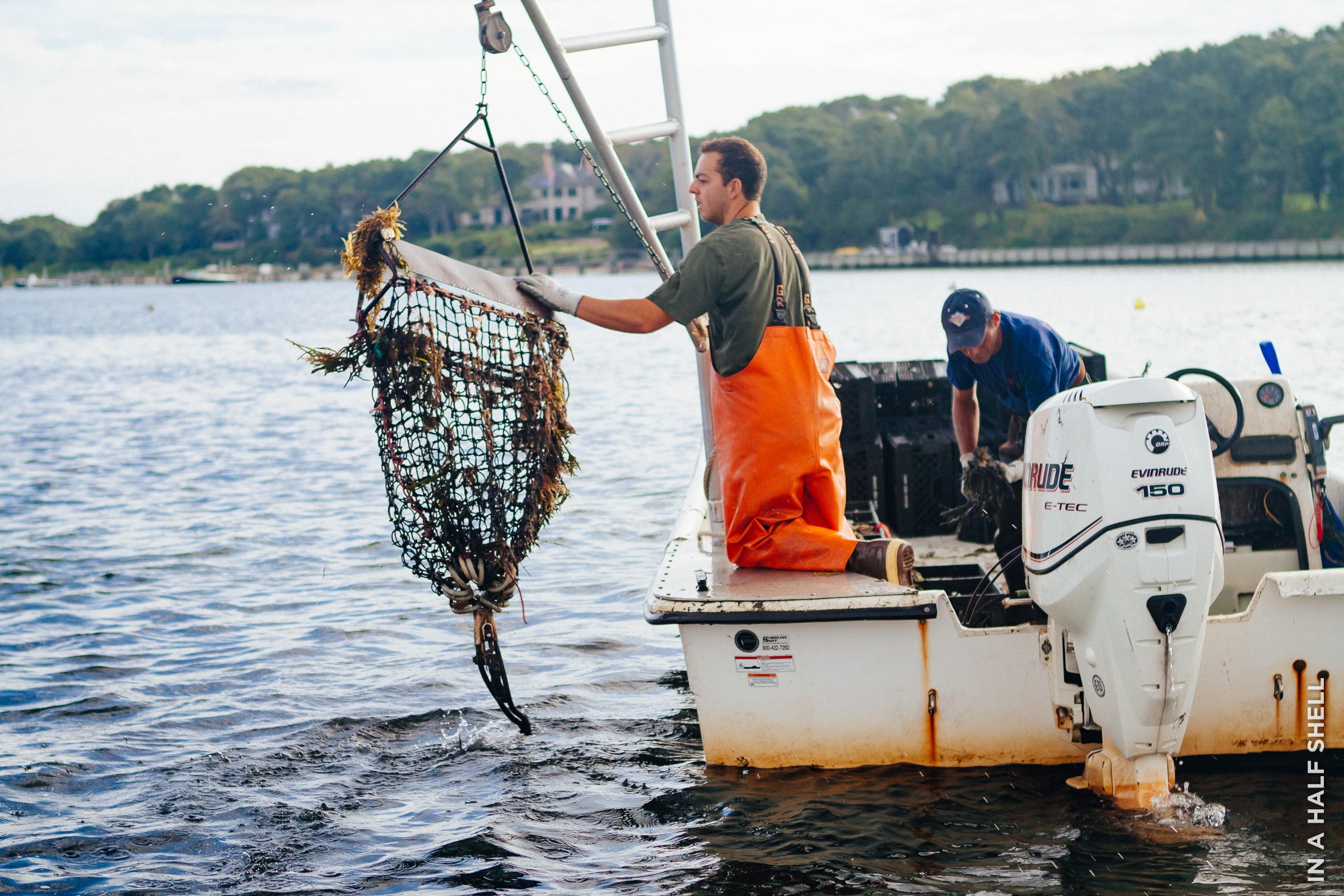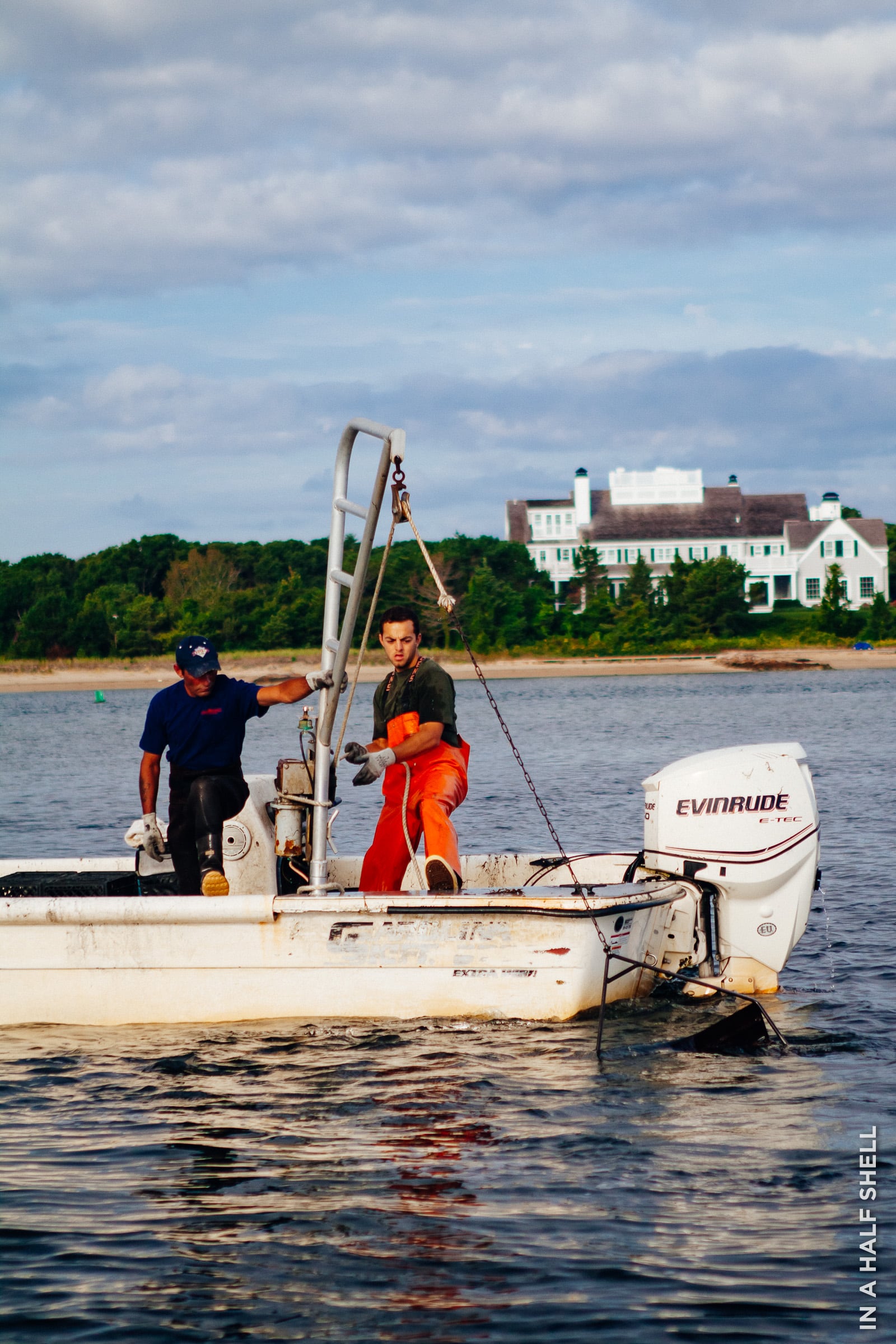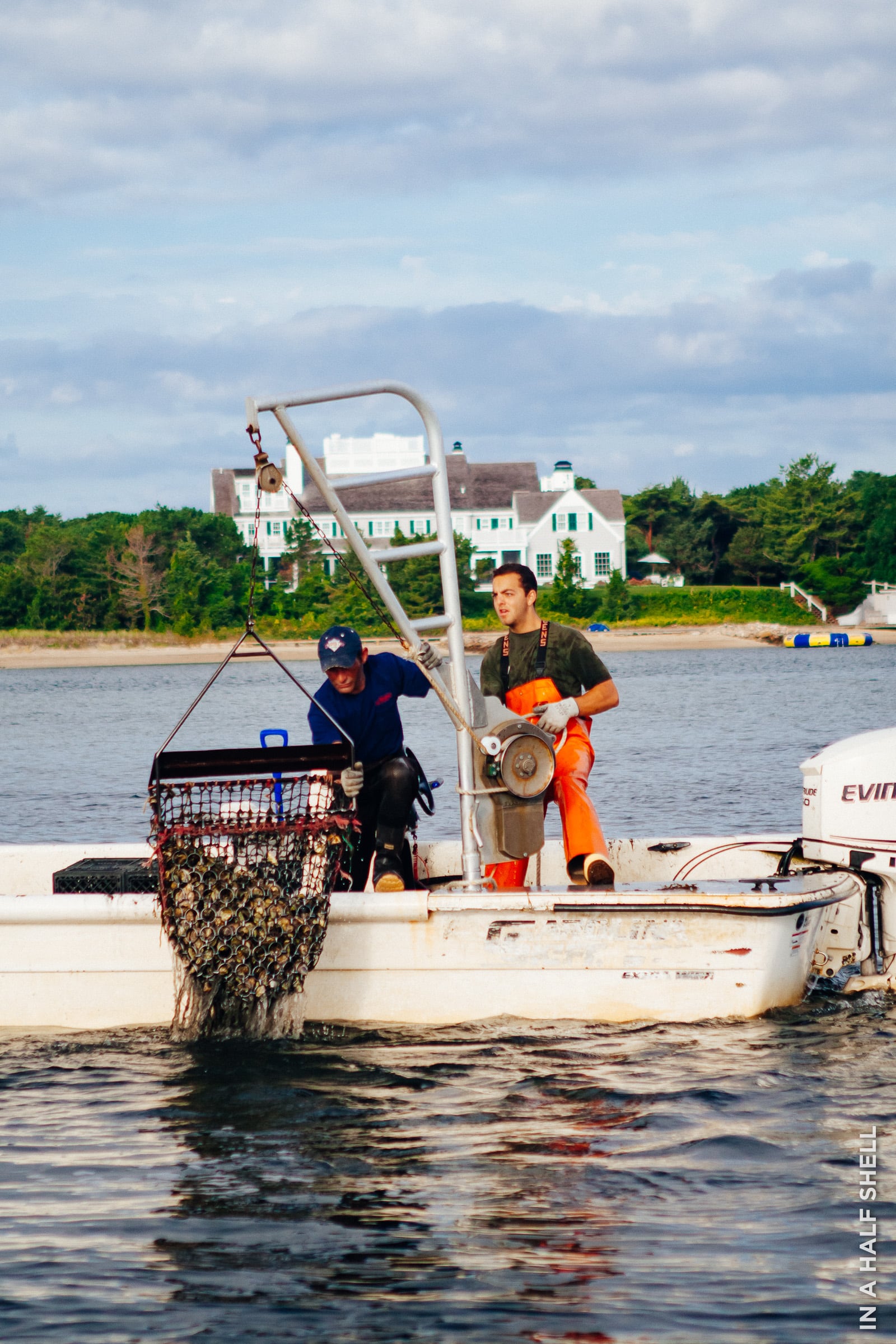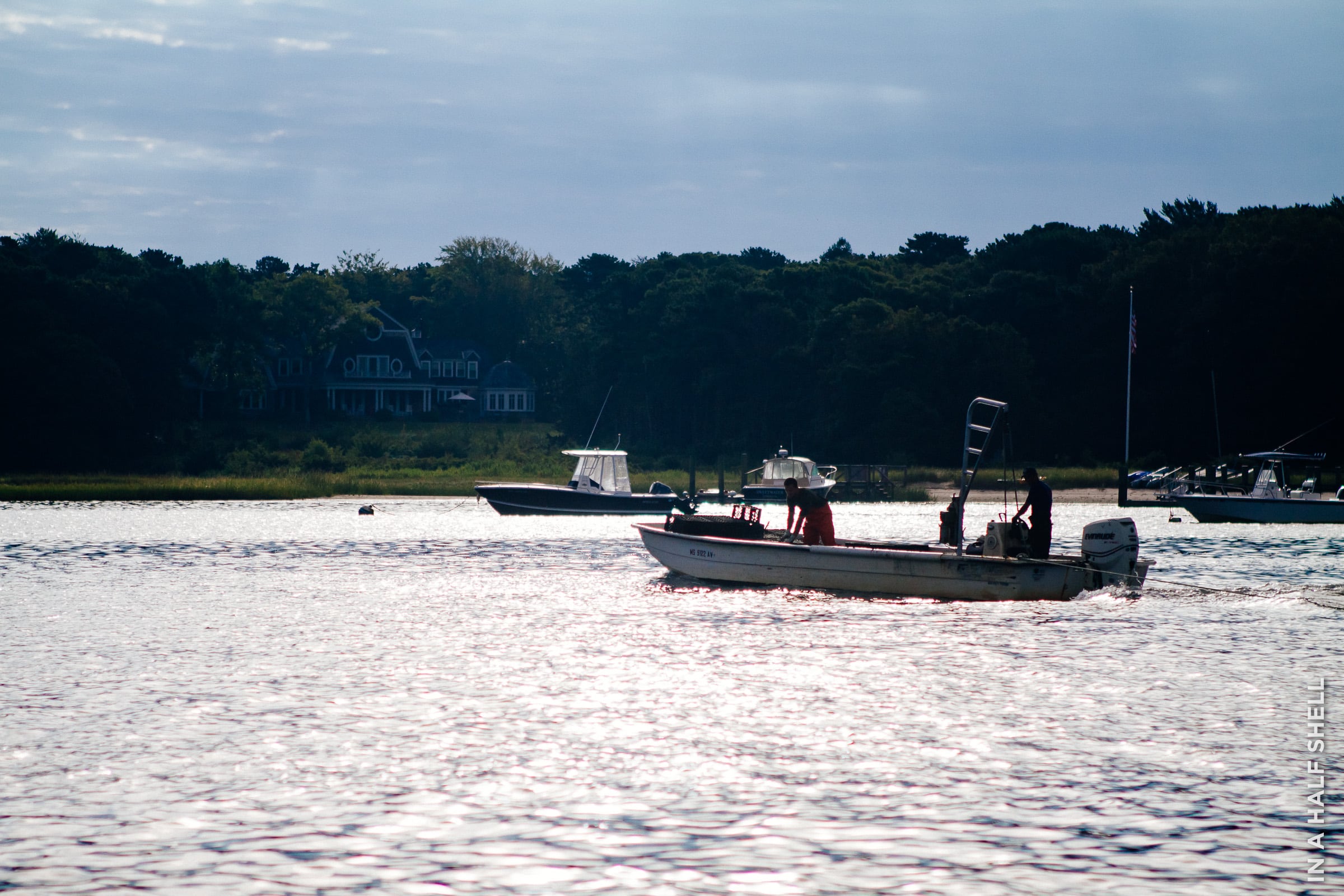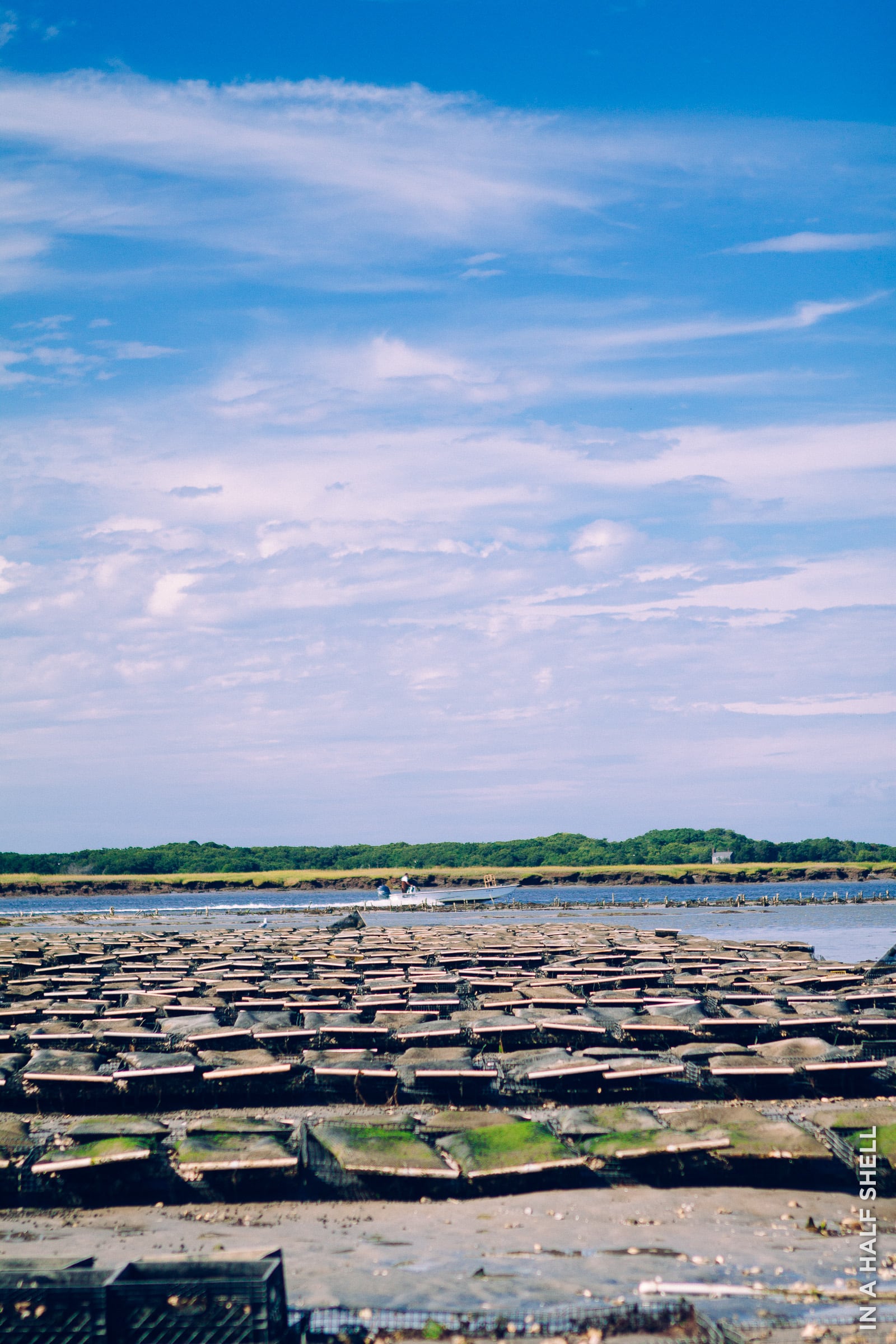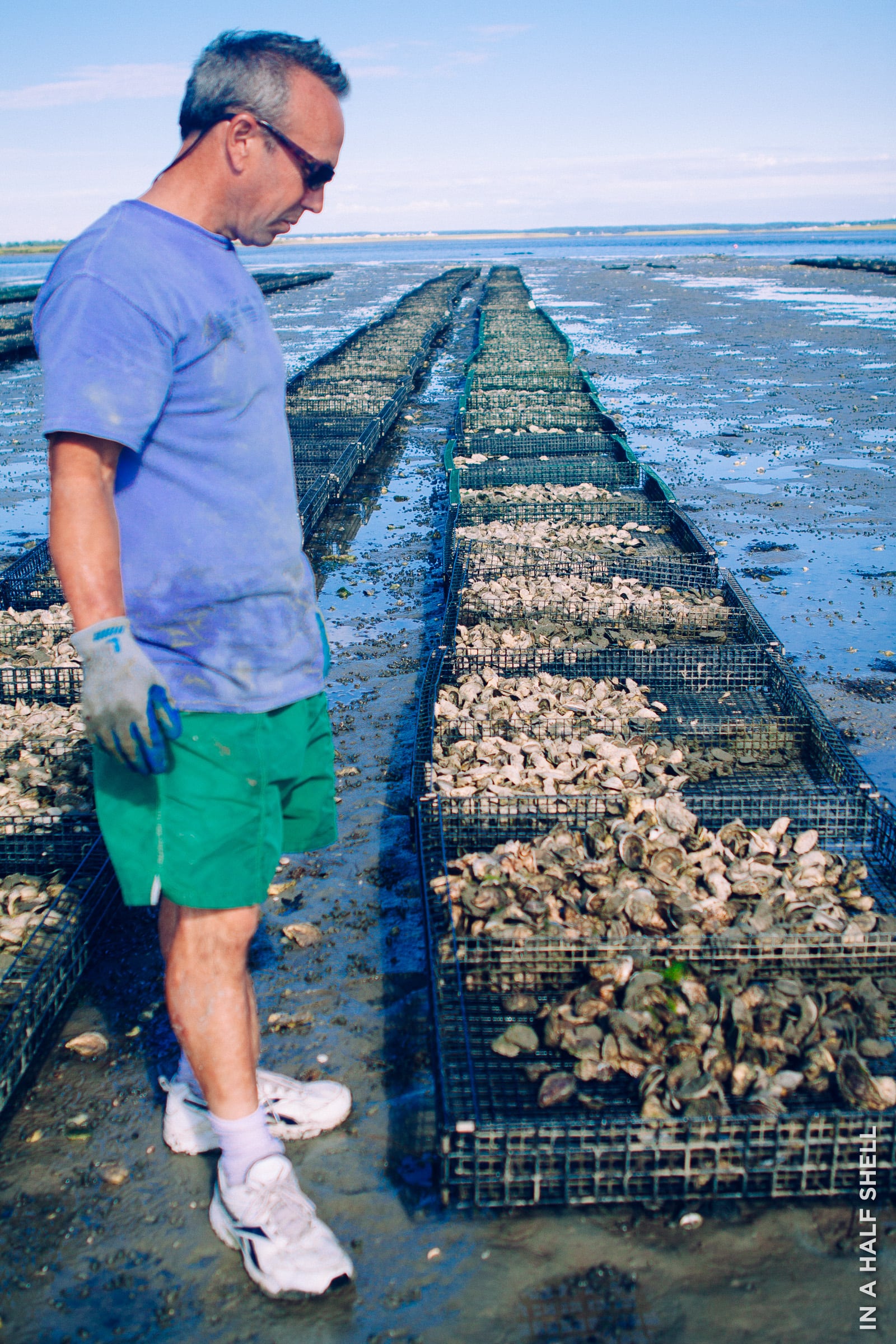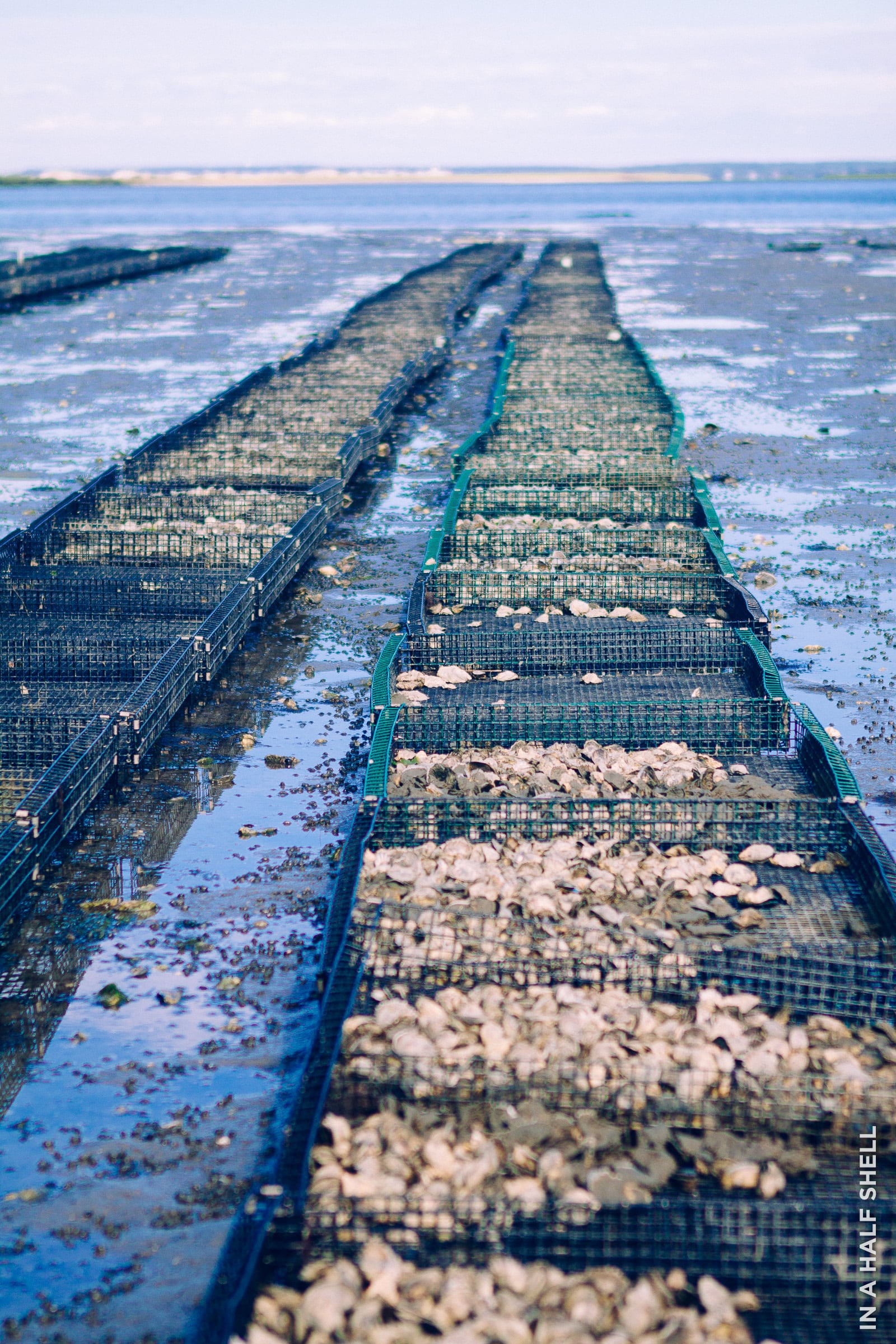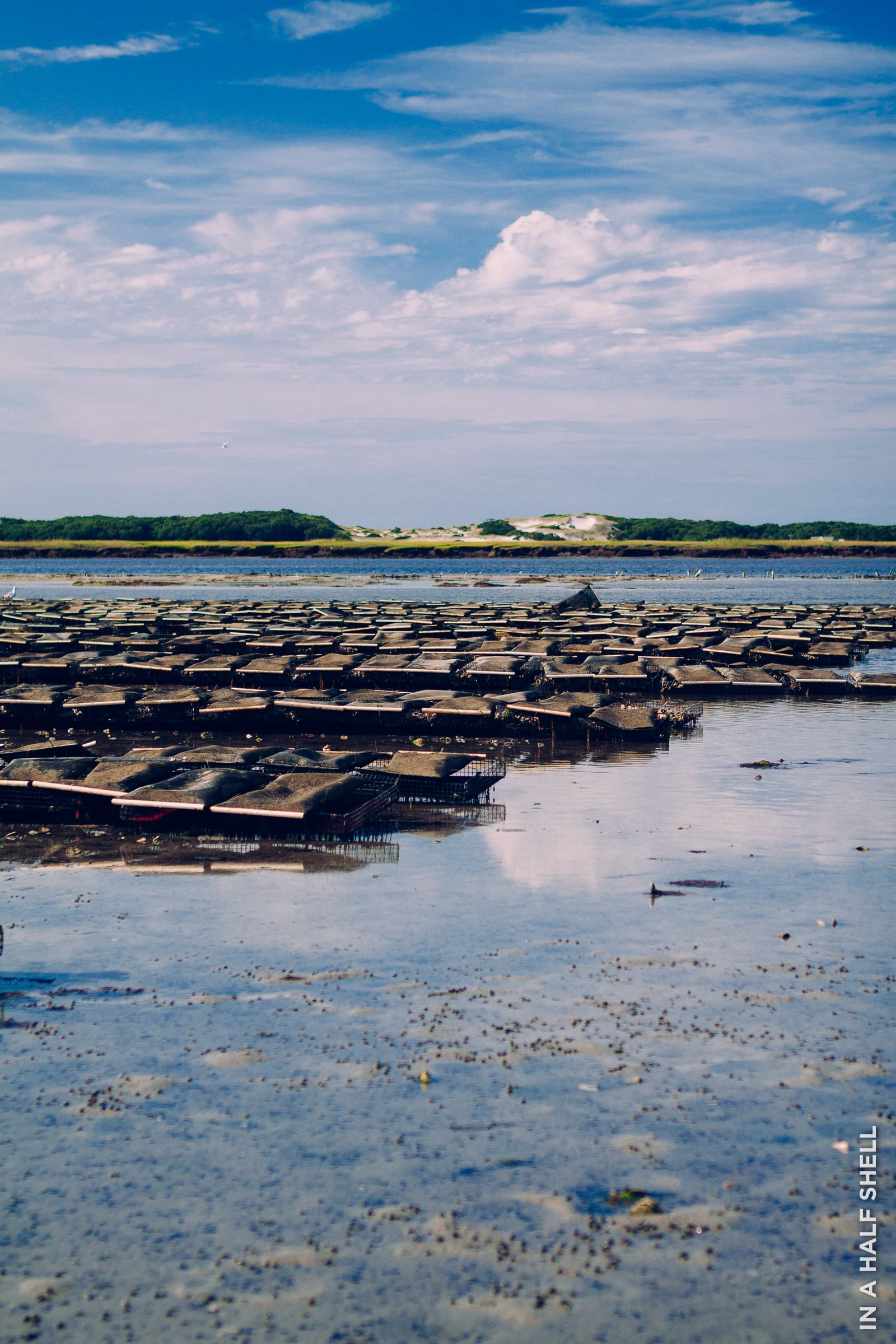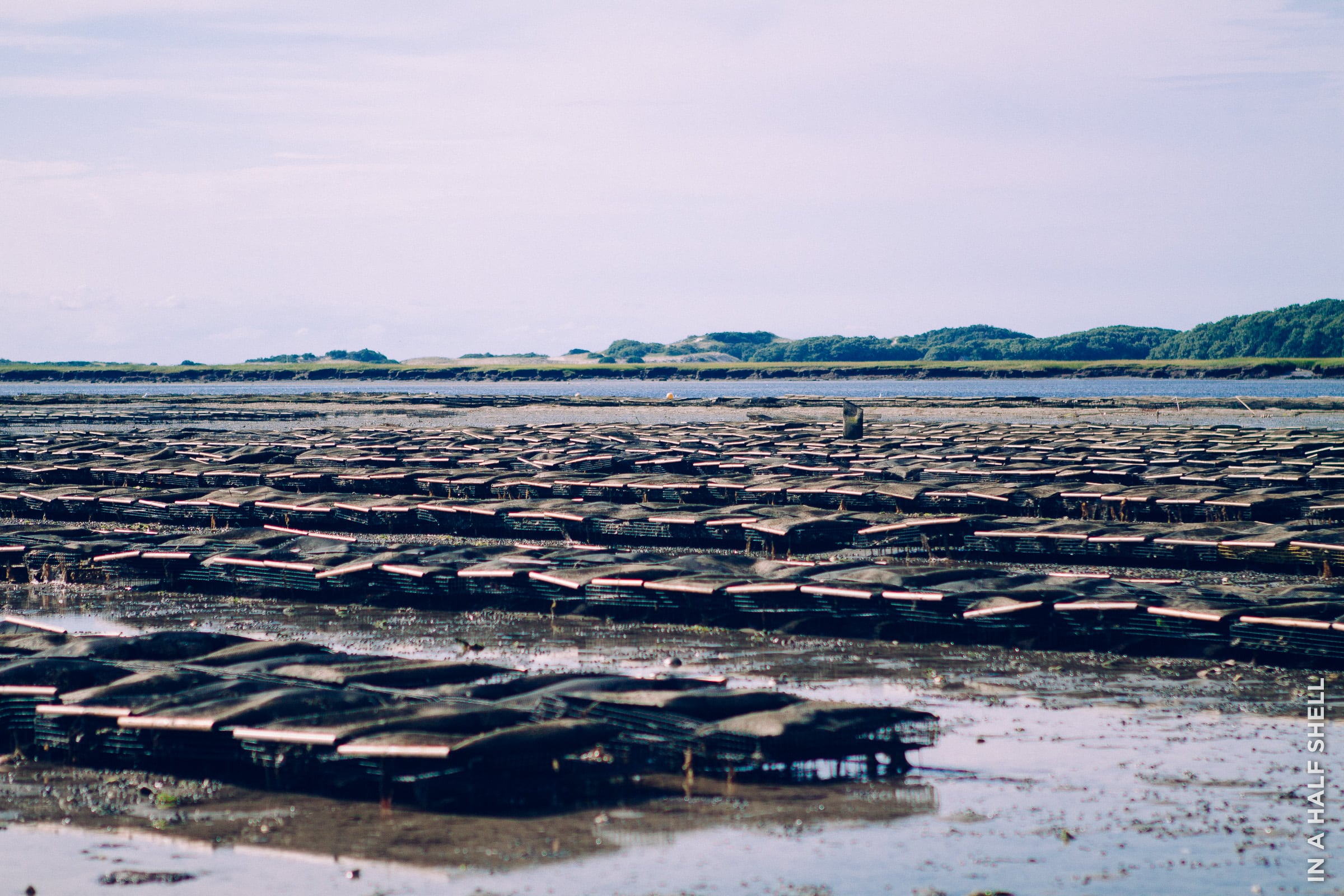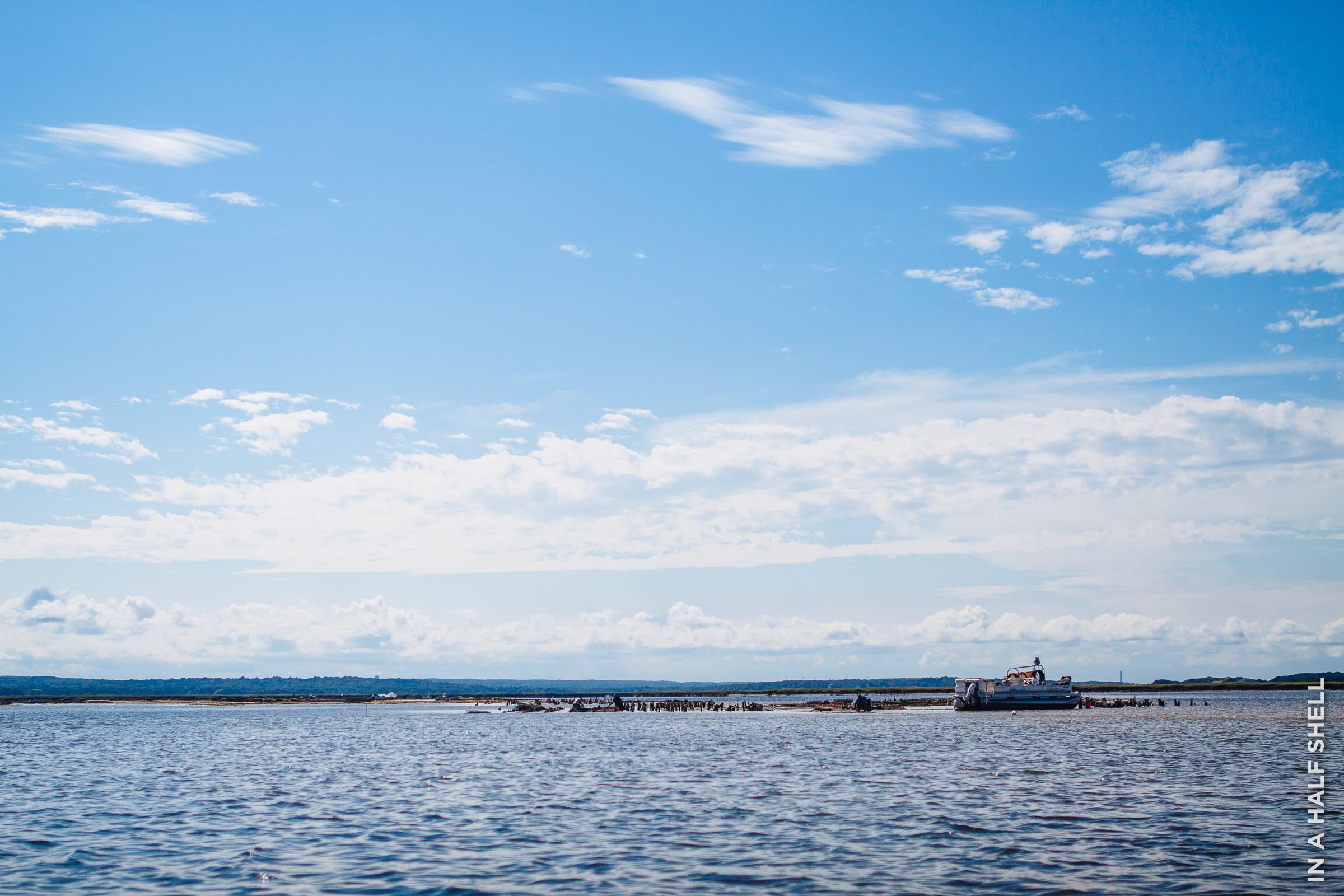Cape Cod Oyster Tour: A Look Into the WiAnno Way
The 14th Annual Wellfleet Oyster Festival, Massachusetts' largest and most cherished oyster event was in full swing this past weekend on the Outer Cape. To commemorate the occasion, I have a handful of oyster stories from Cape Cod that I'd like to share.
This past August, I embarked on my most ambitious bivalve-inspired road trip yet: a week-long oyster farm expedition from Duxbury to Wellfleet. Thanks to the generous support and hospitality of many individuals, my food blogger friend Michelle and I were able to get an extraordinary insider's look at the business of oyster farming. Out of the hundreds of oyster growers along the Cape, we were able to spend time with four different teams across regions. To start the series off, we're going to take a closer look at the fabulous WiAnno Oysters of Barnstable.
Years later when I think back to my time on Cape Cod, there's no doubt that I'll recollect this particularly dreamy afternoon. After a full day of touring WiAnno Oyster Farm with Dave Ryan and Marion Kaiser, the four of us gathered around a sturdy wrought iron table in the peaceful backyard overlooking the marina. We had with us a bright blue bucket full of freshly plucked WiAnno Oysters, lovely bottles of white wine and champagne, ground black pepper, and lemon wedges. The sight of us all chatting, laughing, sipping, and slurping under the warm glow of the "golden hour" was the epitome of oyster love— it couldn't have been more perfect.
What's In An Oyster Name?
The name "WiAnno" (pronounced "wee-AH-no") originally came from a notable Native American sachem named Iyannough of a local Wampanoag tribe in what is now Barnstable County. Thousands of years before the first European settlers arrived, the Wampanoag people were attracted to this region by the large areas of forest, dune, beach, and marshlands. Today, the WiAnno legacy lives on across the upperechelons of Osterville society. Once known as "Oysterville," Osterville remains stunningly idyllic, albeit a little preppy. Just make sure you pack your Vineyard Vines gear if you plan to dine at one of the private clubs.
WiAnno Oysters is a trademarked brand that is grown, marketed, and sold exclusively by Aquanor Marketing and Cape Cod Oyster Company. This partnership formed by Marion Kaiser, founder and CEO of Aquanor Marketing, and Al Surprenant and Dave Ryan of Cape Cod Oyster Company, exemplifies a unique business case where both sets of stakeholders get to do what they do best and reap in greater collective benefits. The two company have parted ways and Cape Cod Oyster Company now brands their oysters as Washburns.
For an end consumer, like myself, there can be a considerable advantage to slurping a branded oyster over a "generic" varietal. How so?
Although the oyster industry abides by some of the strictest harvesting standards in seafood, there's surprisingly little regulation of the end sales and marketing nomenclature. Oyster varieties have historically taken on the name of the region or body of water that they're from (i.e., Wellfleet, Martha's Vineyard, Buzzards Bay) and many growers would sell under the same name, which led to a lot of variability in quality. Just because a cluster of oyster farms share an area doesn't mean that they're all going to turn out the same. How a grower manages his or her crop—from selecting the right seed to determining the planting density to timing—can greatly influence the final product. Trademarked oyster brands have become increasingly popular as a way for individual growers to differentiate their offering and the WiAnno Oyster is a well-established example of this strategy at work.
Best Home Office Ever
No one can prepare you for that moment when you realize a humble oyster lives a fancier life than you do. WiAnno Oysters have it pretty darn good. They begin their juvenile days in a protected cove in the North Bay, feeding on the nutrient-rich waters in Al and Robyn Surprenant's private marina. The Surprenants graciously offered to host us at their insanely charming Osterville compound for a couple of nights, but unfortunately weren't able to receive us personally due to some unexpected travel plans. Although we weren't able to meet in person, I felt like bits of their personalities shined through the decor, inside and out. From the baby blue window trimming and doorways thickened with greenery to the winding driveway laden with crunchy, alabaster oyster shells, their home was like a secret garden full of sensory surprises.
After we settled in our quarters, we headed back outside to meet up with Dave, who manages the day to day operations on the farm. He first showed us his proprietary upweller system, which pumps the brackish water over the spat (baby oysters) at a constant 1500 gallons per minute, 24 hours a day, 7 days a week. It's a truly remarkable piece of equipment, and we were kindly asked to keep photos to ourselves. Dave scooped up a handful of oysters for us to examine and it was very apparent that each had quite a bit of growth along the edges. Every year, he sources high quality seed (diploids and triploids) from select NE hatcheries for his oyster nursery. After a full season in the upwellers, the juveniles are graded and either planted or held back for more supervised nourishment.
A Tale of Two Oyster Cultures
While many Cape Cod oyster farms halt their shipments during the summer, WiAnno boasts product availability 52 weeks out of the year. They are the single largest oyster farm in the state and take great care to ensure that their oysters are always on the market and in top condition. To do this, Dave and his team have developed a sophisticated, semi-diversified production plan to meet the demand and even a little climatic uncertainty. What this means in reality is that they employ two different grow-out methods in two locations.
On the Nantucket Sound side, free-range WiAnno Oysters are grown on the bottom of West Bay. The oyster farm is subtidal year-round, so if you didn't know what you were looking for, you'd never know that an epic bivalve feast was just beneath your boat. Dave obviously likes to keep it that way, but just to be safe, he has a few ways to keep an eye on his prize. Oyster poaching is a real threat, so one can never be too careful.
Meanwhile in Cape Cod Bay near Barnstable Harbor, Dave also manages a sprawling field of off-bottom bags and cages with military precision. A 60-acre community aquaculture plot, hugged by 8,000 acres of salt marshes, is scattered with many oyster farms of all sizes. During low tide, everything is exposed for all to see. The 9.5ft tides come in and out twice a day, which helps produce a deep-cupped shell and a sublimely clean and crisp taste.
So now you're probably wondering: do the two different methods/locations impact the taste? Yes, a bit. But not nearly as much as I thought it would, and not enough to warrant two different product descriptions. The secret to WiAnno's success has everything to do with optimization. "Two sites gives you the advantage of picking and choosing (the best)," said Dave. It is clear that their business priority is focused on offering a very practical value rather than a romantic one.
"I get excited by a good bottom," says Dave. Oh, don't we all?
Sometimes, things that oyster farmers say can that make great t-shirts... :-) It's quite fitting though in this case. The bottom of West Bay is the perfect place to grow oysters. The floor is firm, not soft and muddy. There's not much else there to be disturbed and there are few predators. It's also worth mentioning that West Bay is flanked on one side by Grand Island and Oyster Harbors, a gated community that is considered to be one of the most exclusive addresses on Cape Cod.
We took a pontoon boat into the middle of the bay and Dave proceeded to jump into the blue-green water with a snorkel mask. He spent a few minutes scavenging the bottom for mature WiAnno Oysters. In Massachusetts, oysters must be 3 inches in order to be sold ("Petites" or 2.5 inchers can be sold out of state.) For the ones that don't quite make the mark, they're tossed back into the water as put-back's. A couple of the guys on Dave's crew also affectionately call them "chicas."
What Do WiAnnos Taste Like?
Back up on deck, we decided that it was high time to sample some WiAnnos. Dave carefully popped open a large 3" oyster, removed the top shell, severed the bottom adductor, and flipped the oyster belly over. His take on the flip is that it makes the oyster look prettier, although I've also heard others who are against the flip because it does the art of shucking a disservice. My conclusion is that there's no right or wrong answer to this, just personal preference. Although I personally like to see the splayed mantle, especially if they're dark and feathery.
Dave handed over a beautifully plump oyster in its deeply cupped, green-tinted shell and I gleefully tilted it to my lips. But first, let me take a #shellfie. Ok after that was over and done with, I slurped the meat back.
The oyster liquor possessed a well-rounded, medium brininess (27ppt) and an earthy undertone, and the meat was pleasantly chewy, maybe even a little crunchy at times. I detected luscious, velvety flavors like enoki and wood ear mushrooms in the body. The finish was sweet (might have been the adductor muscle) and slightly chalky. Overall, a very well balanced and fleshy oyster.
Michelle also tried shucking for the first time, which could be a nerve-wracking moment for all parties present. Luckily, she did quite well!
The next morning, we woke up bright and early to watch how the oysters are harvested from the bottom. Given the sheer scale of this farm, it would be almost impossible (or maybe just incredibly exhausting) to do everything manually. I mean, one can only collect so much by diving or snorkeling... Thankfully, the employment of some basic machinery makes things significantly easier to manage. This oyster dredge and winch made the job perfect for a team of two. While one worker drives the boat in a circular-ish (?) pattern, the other operates the winch and pulls the bag of oysters into the boat. Once the collection of oysters has been dumped into plastic crates, the dredge is then lowered again to harvest more.
Gorging and Foraging
In between oyster activities, Marion decided to show us around the Cape and expose us to a few local treats.
First, we spent a considerable amount of time searching for a restaurant known simply as The Raw Bar (Closed). Despite its plain name, this 30-year old establishment is renowned for having one of the top 10 lobster rolls in America. There are three locations, but locals claim that the one in Mashpee is the best. This unassuming seafood shack is tucked away in a little shopping village within a gated community. The three of us ordered two rolls to share and there was definitely enough lobster to go around! It was probably the largest and densest pile of lobster meat that I had ever confronted, but the preparation left something to be desired. In a perfect world, the lobster could've been more tender and sweet. But there's no need to complain. It definitely delivered on its advertising: "All meat, no fillers, they're huge!"
Next, Marion took us to another private beach for a quick look around. I was starting to realize that private clubs are kind of a popular thing around here. We parked near a shrubby area and Marion pointed out some bright red fruits, "These are Rose Hips and this is how you eat them." She slowly peeled back the thick red skin, removed the seeds, and nibbled on the flesh. Rose Hips are apparently packed with Vitamin C and can be used to relieve a number of ailments. Michelle and I both tried a couple. They weren't bad at all. New survival skill acquired!
Marion has been in the seafood business for quite some time, and she originally made her name by importing Norwegian Salmon to the US in the mid-80's (hence the red and blue stripes from the Nordic flag in the Aquanor logo). To prepare for the future, she has gradually transitioned the day-to-day responsibilities down to her son, Eric. This has also allowed her to invest in other aspects of the business, like being an on-site brand ambassador! :-) It's a tough gig, but somebody's gotta do it.
Bay of the Beds
After we digested the mega-lobster rolls and Rose Hips, Marion dropped us off with Dave again on the other side of Barnstable. The low tide, as planned, allowed us to get a closer look at the off-bottom bags and cages. As previously mentioned, Dave ran a completely different operation on the Bay side of the Cape. I actually remember seeing his perfectly lined up rows from the airplane as we were descending.
Dave grew up on the Cape and he first fell in love with this area back in college. One of his academic studies led him to Sandy Neck and his fascination with this mini biosphere never left. It's not difficult to see why; the vistas are truly breathtaking. This underdeveloped bay is protected by an expansive barrier beach and 8,000 acres of marshland. As we hopped out of the boat and onto dry land, I noticed that the ground was covered with tiny black marble-like objects. Upon a closer examination, I discovered that they were little periwinkles. Thousands of them!
Different rows on the farm were designated for different aged oysters. Juveniles were placed in white mesh bags that suspended above the cages, whereas older oysters were simply spread across an open-top wire cage. To leverage the tide for a little mild "tumbling," the mesh bags are made to be buoyant so that they float just a bit when the water returns. I peered across the inventory and noticed that some bags didn't seem to contain anything in them. Dave intentionally limits the quantity of oysters per bag for quality purposes. Lower density means more room for every oyster to eat and develop a nice cup shape. "People get greedy," he remarked, "and the shape/size gets sacrificed." Now if only the US had a standardized oyster grading classification like the French have for their creause huîtres.
The distance between two rows of cages from the next over provides just enough room for one of Dave's boats to float down the middle, allowing two workers to harvest from both sides simultaneously. This helps save energy, cost, and time. During the summer, having such efficiency is also important for another reason: public food safety. A few Massachusetts shellfishing areas have seen an increase in vibrio outbreaks in recent years, and Dave takes every precaution to ensure that his oysters are safe to consume. To that end, he designs stringent quality and sanitation specifications that actually exceed the federally mandated HACCP seafood inspection program.
Once the oysters have been harvested into plastic crates, they are transferred to a refrigerated truck and driven to a distribution center where they are power washed, hand graded, and packed for shipment.
By the time we realized that the tides were coming back in, the water was already at our ankles. A few minutes later, mid-calf. Then the knee! It was a little humbling to imagine this entire area being covered in over 9 feet of water in a matter of hours. It's just as well that we had to leave. Otherwise, I would've surely devoured the whole lot. Maybe. Before departing the farm, Dave asked us how many WiAnnos we wanted to have for the afternoon. In my mind, I thought "one milllliooonnn oysters!!!" I think we settled on a few several dozen.
A Special Thanks
Many, many thanks to Marion Kaiser and Dave Ryan for taking time out of their busy schedules to share their story. Also, thanks for treating us to several wonderful meals and tasty wine! Secondly, I want to thank Al and Robyn Surprenant for being the most generous hosts. Thank you for welcoming us into your beautiful home… even when you weren't home! I hope we will be able to meet sometime in the near future.
Some Behind the Scenes of the Cape Cod Oyster Tour
How this trip came about was almost completely based on sheer luck and being flexible. One day while I was feeling particularly wanderlusty from my Eastern Shore Oyster Trip high, I serendipitously stumbled upon a BARGAIN roundtrip flight from New York (JFK) to Barnstable Municipal Airport (HYA) on JetBlue for $56. No joke. And no, we weren't flying on the wing.
In the next next edition, we'll be swinging back towards the Upper Cape to check out Monks Cove Oyster Farm with Pat and Jenny Ross!




